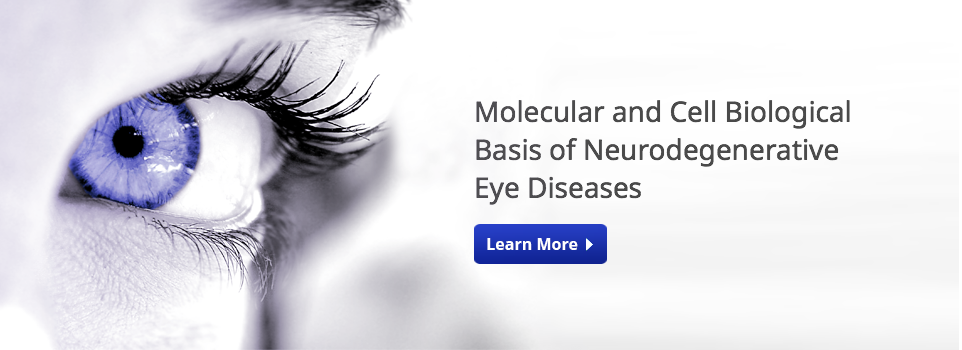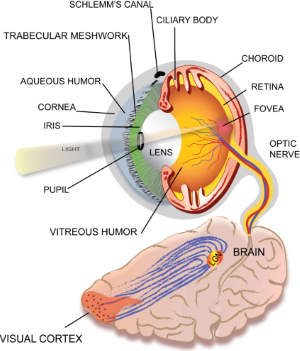Welcome to the Khanna Lab
Our lab’s interest in scientific discovery is rooted in a desire to understand how the fundamental units of life, our cells, adapt to their environments and how the failure of the cells to adapt results in human disease. We strive to achieve our goals by focusing on the eye.
The eyeball is located at a strategic position to ensure maximum light detection while securely positioned in the cavity of the orbit. It is largely divided into anterior and posterior chambers. The light enters the anterior part of the eye, which includes the cornea and the pupil, and passes through the lens to the posterior part of the eye, which is the retina; here, it activates a complex set of events. The retina then projects the signal via the optic nerve to the lateral geniculate nucleus (LGN) in the brain.
Light detection and processing dictate most of our memories of the world around us. The eye is the most exposed part of the brain and amenable to several manipulations that allow us to understand the deeper mysteries of the brain. Nonetheless, we know relatively little about the mechanisms by which we detect and process light signals. In fact, a much greater part of our central nervous system (almost half of the cerebral cortex) is devoted to visual processing than any other system.
As first responders to light, photoreceptors have been the subject of several studies aimed at understanding the mode of light detection and processing. In recent years, a lot of progress has been made in understanding how photoreceptors develop unique structural modifications to process and enhance the light signal. In this review, I will focus on one such modification, which is the development and maintenance of the sensory compartment of photoreceptors, called the outer segment (OS).
To learn more about the specific questions being asked in the Khanna Lab, click here.



